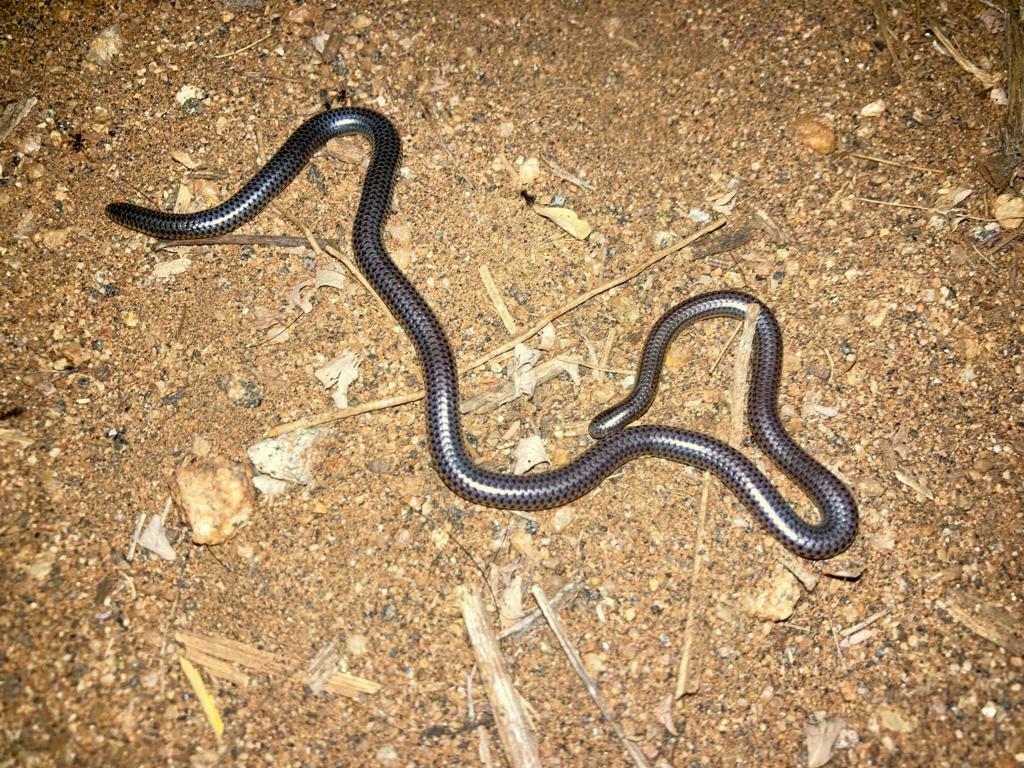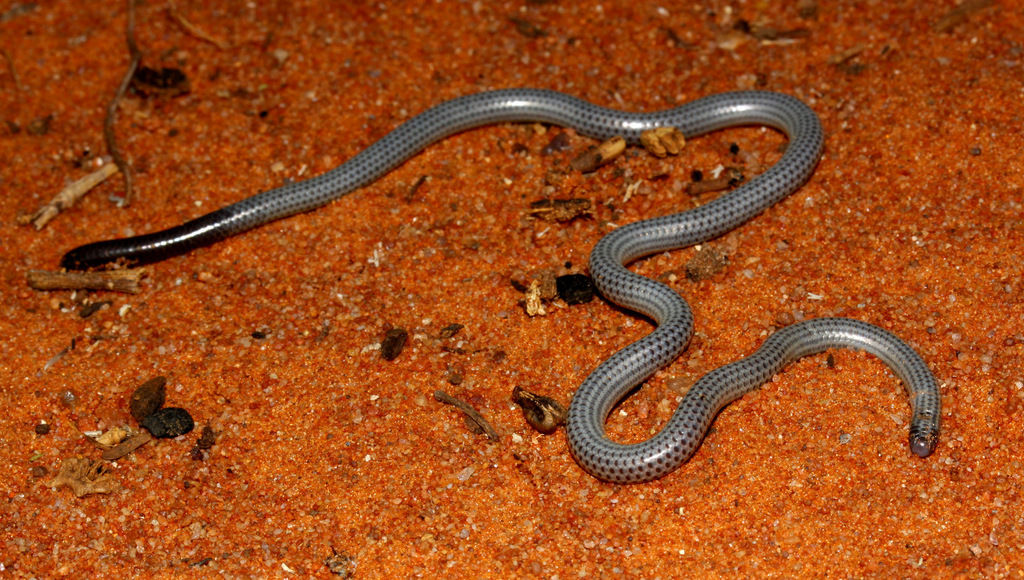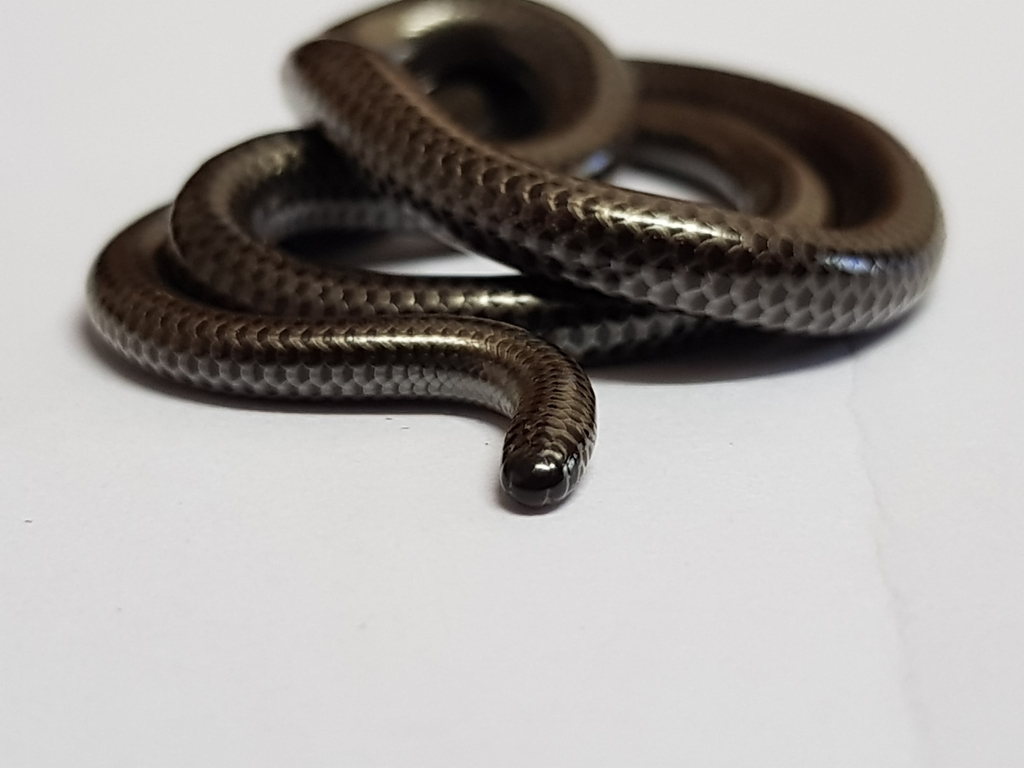In the shadowy world beneath our feet, a remarkable reptile has perfected an unusual strategy for survival. The sand-dwelling threadsnake, particularly those in the genus Leptotyphlops, has evolved one of nature’s most peculiar defensive behaviors: the ability to burrow backward through sand and soil. This tiny serpent, often no thicker than a spaghetti noodle, uses reverse locomotion not as a party trick, but as a sophisticated survival mechanism. Unlike most burrowing animals that forge ahead into the earth, these specialized snakes can rapidly retreat in reverse, confounding predators and vanishing from sight with remarkable efficiency. This backward digging ability represents one of the animal kingdom’s most fascinating adaptations, showcasing how evolution has crafted unique solutions to life’s challenges.
The Remarkable Threadsnake Family

The main practitioners of backward burrowing are members of the Leptotyphlopidae family, commonly known as threadsnakes or slender blind snakes. These diminutive reptiles rarely exceed 30 centimeters in length, with many species measuring just 10-15 centimeters when fully grown. Their pencil-thin bodies are perfectly adapted to life underground, where they navigate through soil particles with surprising agility. Threadsnakes are distributed worldwide across tropical and subtropical regions, with particular diversity in Africa, Asia, and the Americas. Despite their widespread distribution, many people have never encountered these secretive creatures, as they spend the vast majority of their lives beneath the surface, emerging only under specific conditions.
Physical Adaptations for Underground Life

Threadsnakes possess a suite of specialized physical adaptations that make their subterranean lifestyle possible. Their bodies are cylindrical and uniformly thin from head to tail, without the distinct neck region found in many other snake species. Their scales are smooth and tightly overlapping, creating a surface that minimizes friction against soil particles. Perhaps most distinctive is their head morphology – small, blunt, and often featuring a slightly pointed snout that aids in forward burrowing. Their eyes are vestigial and covered by scales, appearing as mere dark spots on their heads, as vision offers little advantage in their dark underground world. Instead, these snakes rely primarily on touch and chemical sensing to navigate and locate prey in their lightless domain.
The Mechanics of Backward Burrowing

The backward burrowing technique employed by threadsnakes is a marvel of biomechanical engineering. When retreating, the snake pushes its tail tip against the soil and executes a series of rapid, accordion-like contractions that propel it backward into the substrate. This movement is achieved through specialized musculature that allows for powerful thrust in the reverse direction. High-speed camera studies have revealed that these snakes can disappear into loose soil in mere seconds, moving at speeds that would be impossible for most burrowing animals traveling backward. The tail often features a small spine or hardened tip that provides additional purchase against the soil, functioning somewhat like a miniature anchor point from which the snake can push itself backward.
Evolutionary Advantages of Reverse Digging

Backward burrowing provides threadsnakes with several distinct evolutionary advantages that have helped ensure their survival across millions of years. The most immediate benefit is predator evasion – when threatened on the surface or in a shallow burrow, the ability to retreat backward rapidly allows these snakes to escape danger without having to turn around in confined spaces. This adaptation is particularly valuable given their small size and vulnerability to a wide range of predators. Additionally, backward movement helps these snakes maintain their prey-capture tunnels by allowing them to back out of dead ends or collapsed passages without having to create new pathways. Evolutionary biologists believe this specialized locomotion evolved gradually over millions of years as these snakes adapted to increasingly specialized subterranean niches.
Hunting and Feeding Behaviors

The backward burrowing ability of threadsnakes complements their specialized feeding ecology. These snakes primarily consume the eggs, larvae, and pupae of ants and termites, making them important controllers of insect populations. They locate their prey through chemical sensing, following pheromone trails left by their insect quarry. When hunting, threadsnakes will forward-burrow into ant or termite nests, consume their fill, and then employ their backward burrowing technique to retreat rapidly from the colony before worker insects can mount a defensive response. This feeding strategy minimizes their exposure to bites and stings from adult insects while allowing them to access the protein-rich developmental stages. Some species have been observed to consume hundreds of ant larvae in a single feeding session.
The Namibian Thread Snake: A Master of Disappearance

Among the most accomplished backward burrowers is the Namibian thread snake (Leptotyphlops scutifrons), which inhabits the sand dunes and arid regions of southwestern Africa. This species has perfected the art of vanishing into the sandy substrate with remarkable speed. When threatened, it can disappear beneath the surface in less than two seconds, leaving no trace of its passage. Research conducted in the Namib Desert has documented this snake’s ability to burrow backward through sand at speeds approaching 30 centimeters per second – an extraordinary pace considering its small size. The Namibian thread snake’s body is particularly well-adapted to sandy environments, with smoothly polished scales that minimize friction against the abrasive sand particles.
Sensory Systems for Underground Navigation

The backward-burrowing capability of threadsnakes is supported by sophisticated sensory adaptations that compensate for their limited vision. Their entire body surface is highly sensitive to touch, allowing them to detect minute changes in soil texture and composition. The scales covering their bodies contain numerous mechanoreceptors that provide detailed feedback about their surroundings. Additionally, threadsnakes possess a well-developed vomeronasal (Jacobson’s) organ that allows them to “taste” chemical cues in their environment by flicking their tongue to collect molecules. This chemical sensing ability enables them to detect prey, avoid predators, and locate suitable habitat even in complete darkness. Some species also appear sensitive to ground vibrations, which may help them detect approaching predators through the substrate.
Scientific Research and Discoveries

The backward burrowing behavior of threadsnakes has attracted scientific interest from multiple disciplines, including biomechanics, evolutionary biology, and robotics. Recent studies using X-ray videography have revealed the precise muscular coordinations that enable backward locomotion, showing how waves of contraction move from tail to head during reverse burrowing. Genetic research has begun to uncover the evolutionary history of this adaptation, suggesting it evolved independently in several lineages of fossorial (burrowing) snakes. Perhaps most intriguingly, engineers at several research institutions have drawn inspiration from threadsnakes when designing burrowing robots for applications ranging from soil sampling to search-and-rescue operations. These biomimetic robots employ principles derived from the snake’s locomotion to achieve efficient subsurface movement.
Ecological Roles and Importance

Despite their secretive nature, backward-burrowing threadsnakes play significant ecological roles in their native habitats. By preying on social insects like ants and termites, they help regulate populations that might otherwise reach destructive levels. Their burrowing activities contribute to soil aeration and nutrient cycling, creating pathways for water infiltration and root growth. These snakes also serve as prey for larger predators, including birds, mammals, and other reptiles, forming an important link in food webs. In agricultural regions, thread snakes can be beneficial by controlling pest insects that might damage crops, though their contributions often go unnoticed due to their subterranean lifestyle and small size.
Conservation Challenges and Threats

The specialized nature of backward-burrowing threadsnakes makes them vulnerable to certain environmental changes and human activities. Habitat destruction through urbanization, agriculture, and mining directly eliminates their underground homes and feeding grounds. Soil compaction from heavy machinery and livestock can make the substrate too dense for these small snakes to navigate effectively. Pesticide use, particularly insecticides targeting ants and termites, can deplete their food sources or accumulate in their tissues through biomagnification. Climate change poses additional threats through altered precipitation patterns that may affect soil moisture levels critical for their survival. Despite these challenges, the secretive nature of threadsnakes has made assessing their conservation status difficult, with many species lacking sufficient data for proper evaluation.
Cultural Significance and Folklore

The unusual backward-burrowing behavior of threadsnakes has contributed to their presence in cultural beliefs and folklore across many regions. In parts of West Africa, these snakes are sometimes considered to have magical properties due to their ability to “disappear” into the earth. Some indigenous communities in the Americas believed threadsnakes could move through solid earth as easily as fish through water, attributing supernatural powers to them. In other cultures, their backward movement was interpreted as an omen or symbol of reversal. Despite their harmless nature, the unfamiliarity of these snakes has sometimes led to fear and misunderstanding, with local names often translating to terms like “two-headed snake” or “death worm” about their similar appearance from both ends.
Distinguishing from Similar Species

Backward-burrowing thread snakes are sometimes confused with other small, fossorial reptiles that share similar habitats or physical characteristics. Worm lizards (Amphisbaenians) are similarly adapted for underground life but are not true snakes and typically have more visible segmentation along their bodies. Blind snakes of the family Typhlopidae also inhabit underground environments but generally lack the specialized tail structure used for backward burrowing. Juvenile earth snakes and small burrowing colubrids may superficially resemble threadsnakes, but typically have more developed eyes and different scale patterns. The most definitive identification features of true threadsnakes include their extremely slim profile (often 2-5mm in diameter), vestigial eyes, and smooth, glossy scales that characteristically reflect light when examined closely.
Future Research Directions

The fascinating backward burrowing abilities of threadsnakes continue to inspire new research questions across multiple scientific disciplines. Neurobiologists are particularly interested in understanding how the snake’s nervous system coordinates the complex muscle contractions required for reverse locomotion. Evolutionary geneticists are working to identify the specific genetic adaptations that enable this specialized movement. Conservation biologists are developing new methods to monitor threadsnake populations, including environmental DNA sampling that can detect their presence from soil samples. Perhaps most excitingly, the field of soft robotics continues to draw inspiration from these snakes, with several research teams developing flexible, articulated robots that can navigate through granular media using similar principles. As technology advances, our understanding of these remarkable reptiles and their unique adaptive strategy will undoubtedly deepen.
The backward-burrowing threadsnake represents one of nature’s most ingenious adaptations, a testament to the power of natural selection to craft solutions to environmental challenges. These diminutive reptiles have mastered a form of locomotion that few other vertebrates can achieve, using it to evade predators, secure food, and thrive in their subterranean realm. As we continue to study these secretive creatures, they offer valuable insights into biomechanics, evolution, and the remarkable diversity of survival strategies in the animal kingdom. The next time you walk across sandy soil in a tropical or subtropical region, remember that just beneath your feet might lie one of nature’s most specialized burrowers, capable of disappearing in reverse at a moment’s notice – a living reminder that evolution’s innovations often occur in the places we least expect to look.




